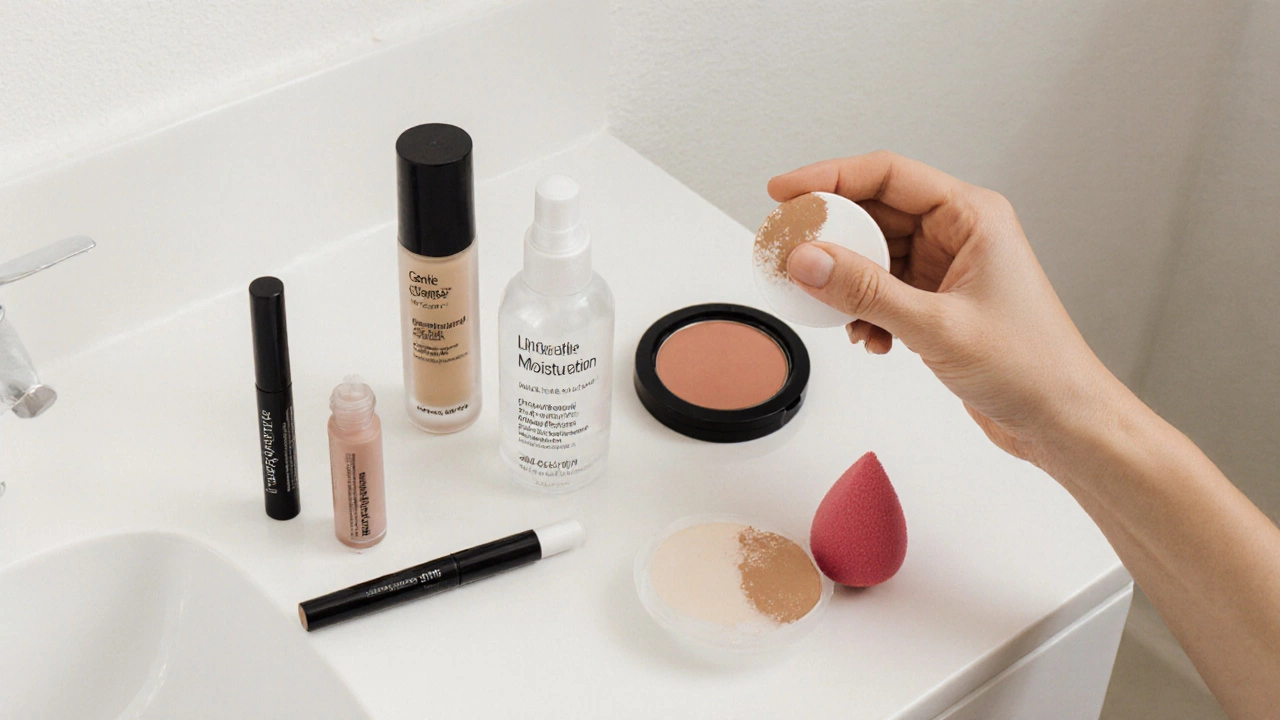Essential Makeup Products Every Beginner Needs to Know
When you’re starting out, essential makeup products, the core items that deliver real impact without clutter. Also known as basic makeup products, these are the tools that turn bare skin into a polished look—without needing a full cabinet. You don’t need ten foundations, five lipsticks, or a dozen brushes. What you need is a shortlist of products that actually work together, fit your skin type, and fit your life.
Think of makeup like a wardrobe: you don’t need every shirt, just the ones that fit well and get worn. The same goes for cosmetics. cosmetic categories, the three main groups: cleansing, protective, and decorative. Also known as types of cosmetics, they help you understand what each product is really for. Cleansing includes makeup removers and cleansers. Protective covers sunscreen and primers. Decorative is what most people think of—foundation, concealer, mascara, lipstick. The essential makeup products fall mostly in the decorative group, but they only work if the protective layer underneath is solid.
What do real beginners actually use? A good moisturizer, a tinted moisturizer or light foundation, a concealer for dark circles, a neutral brow pencil, mascara that doesn’t clump, and a lip color that looks like your lips but better. That’s it. You don’t need contour kits, glitter eyeshadows, or liquid liners on day one. Those come later, once you know what your skin needs and what you actually enjoy wearing. Many people buy too much too soon and end up with half-used products gathering dust. Focus on function, not trends.
It’s not about brands or price tags. A $5 drugstore mascara can outperform a $30 one if it suits your lashes. What matters is texture, ease of use, and how it looks on your skin. The best starter kit is the one you’ll actually use every morning. If you skip it because it’s too complicated, it’s not the right fit. That’s why the most successful beginners stick to three to five items—they build confidence, not clutter.
And don’t forget: makeup is personal. What works for someone else might not work for you. That’s why you’ll find guides here on how to pick shades for your skin tone, how to apply eyeliner without smudging, and why some products are better for mature skin than others. You’ll also see real breakdowns of what’s in your products—like whether a brand’s claims hold up, or if a ‘luxury’ item is just overpriced packaging. This isn’t about perfection. It’s about looking like yourself, just a little more put-together.
Below, you’ll find honest advice from people who’ve been there—whether it’s choosing the right mascara for aging eyes, understanding what makes a product truly worth the cost, or learning how to build a routine that doesn’t feel like a chore. No fluff. No gimmicks. Just what works, in plain language, for real lives.
What Products Do You Need for a Makeup Routine? A Simple Guide for Everyday Wear
Learn the 10 essential makeup products you actually need for a simple, everyday routine. No fluff, no overcomplicated steps-just what works for real life.

 Hair Care
Hair Care